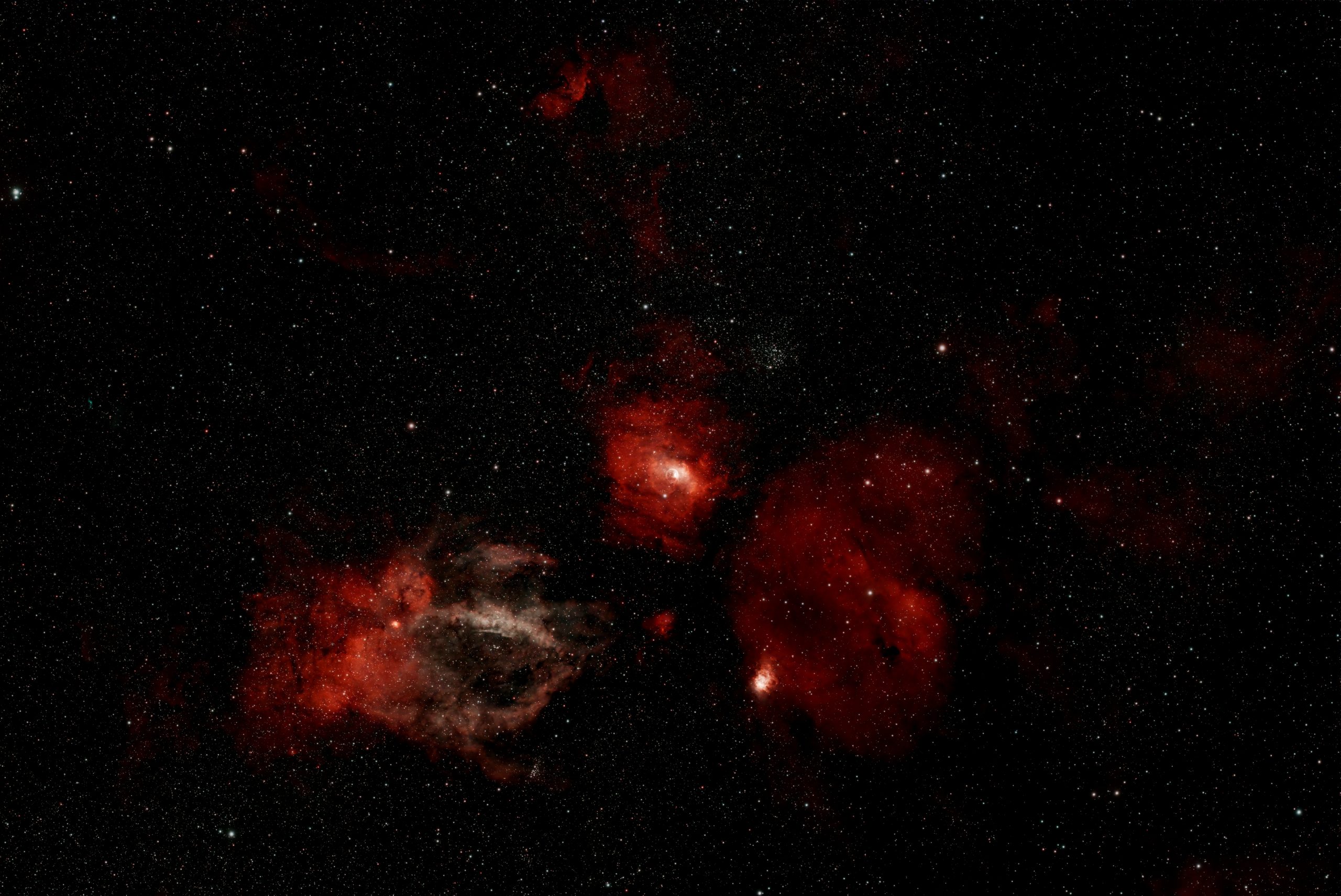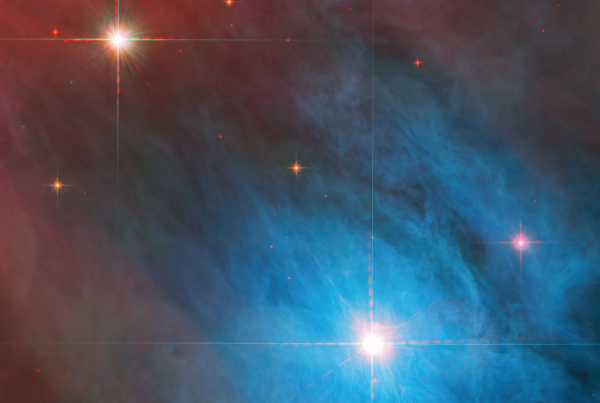Not every deep sky object is bold and bright. Some reveal their beauty slowly, as you learn to see them more clearly. The Bubble Nebula, tucked away in the constellation Cassiopeia, is one of those targets.
It doesn’t jump out at you in a single exposure. But with care – and enough data – it transforms into a luminous shell of gas, suspended in a rich starfield. For astrophotographers working with narrowband filters, it becomes a rewarding project that balances subtlety with striking structure.
Here’s how to find it, photograph it, and make the most of this underrated gem.
What Is the Bubble Nebula?
The Bubble Nebula (NGC 7635) is an emission nebula about 7,100 light-years away in the direction of Cassiopeia. At its centre is a massive, hot young star – a Wolf-Rayet star – blowing powerful stellar winds into the surrounding gas and dust. These winds sculpt the surrounding material into a nearly spherical shell – the bubble you see in images.
The nebula glows mainly in hydrogen-alpha (Ha) and oxygen-III (OIII), making it a great target for narrowband imaging, especially from light-polluted locations.
It’s relatively small in the sky – about 15 arcminutes across – so it’s best imaged at longer focal lengths (400mm or more), ideally with a telescope.
When and Where to Photograph It
- Constellation: Cassiopeia
- Best months (UK): August to December
- RA/Dec: ~23h 20m, +61° 12′
- Visibility: High in the northern sky, making it well-placed from the UK for much of the night.
You can find it not far from M52, the open star cluster – a helpful landmark when framing. Use a tool like Stellarium, SkySafari, or ASIAIR’s plate-solving to confirm your framing.
Recommended Equipment
To capture the Bubble Nebula with clarity, you’ll benefit from:
- A small apochromatic refractor or longer focal-length telescope (400mm–1000mm).
- A cooled colour or monochrome astro camera – the finer the pixel scale, the more structure you’ll reveal.
- A narrowband filter set (Ha and OIII at a minimum, SII if you’re mapping in SHO palette).
- A reliable equatorial mount capable of tracking at high accuracy.
- Guiding system (autoguider and guide scope or OAG) for longer exposures.
- Dew control, power, and cable management for stability across several hours.
You’ll need integration time – the bubble’s outer shell is faint. Expect to stack several hours of data, ideally across multiple nights.
Framing and Composition
While the Bubble Nebula is relatively small, it sits in a busy star field and shares its frame with other nebulous structures. This gives you some flexibility in composition.
- You can centre the bubble for maximum symmetry, especially if using a telescope with 500mm or less focal length.
- At longer focal lengths, you can offset the bubble slightly and include M52 for added context.
- Use plate-solving tools to frame consistently across sessions.
You’ll need accurate polar alignment and guiding – this is not a one-exposure target.
Exposure and Filters
The Bubble Nebula benefits greatly from narrowband imaging:
- Hydrogen-alpha (Ha): reveals the main body of the nebula and surrounding gas.
- Oxygen-III (OIII): brings out the outer shell and internal highlights.
- Sulphur-II (SII): optional, but useful if you want to create an SHO (Hubble-style) colour palette.
Typical exposure plan:
- Ha: 5–10 minute subs, totalling 2–4 hours.
- OIII: 5–10 minute subs, also 2–4 hours.
- SII (optional): 5–10 minute subs, at least 2 hours.
From darker skies, or with sensitive gear, you can also capture this target in broadband – but it will be less distinct.
Processing Tips
Bringing out the bubble takes gentle, deliberate processing:
- Use star reduction to help the bubble stand out in a busy field.
- Enhance local contrast (with masks or tools like local histogram equalisation) to define the shell edge.
- Combine Ha and OIII using bicolour techniques if you’re not using SII.
- Use colour mapping creatively – SHO or HOO palettes both work well.
Don’t expect instant results. The bubble is subtle by nature – but that’s part of its charm.
Final Thoughts: Patience With A Reward
The Bubble Nebula might not be the first object people try to photograph – but for those who do, it offers something unusual. A delicate structure, suspended in a dense sea of stars, shaped by forces we can only begin to model.
It’s a target that teaches you how to frame, expose, and process with care. And when it finally appears in your image – the faint arc of a blown-out shell, glowing quietly in Ha and OIII – it’s a moment of real satisfaction.
Not every deep sky object has to be bright to be beautiful. Some, like the Bubble Nebula, reward those who learn to look more closely.




